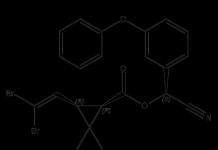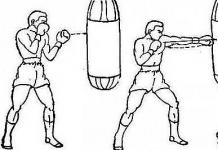FURFUR continues to deal with the current state of affairs in the world of tattoos. Not long ago we talked about Soviet prison tattoos, which became a special fetish in the West. Today, as an alternative to the tired old school, we will talk in detail about another technique in which the emphasis is on dots - dotwork.
|
With the most careful finishing work, each point is placed separately - therefore, such work takes a long time, is expensive and requires a lot of patience from the master. There are quite a few application techniques - finishing tattoos are done both with a classic induction machine and with your hands (the so-called hand-poking). Dotwork requires not only patience from the tattoo artist, but also skill - poorly placed dots turn blue and blur. But a good finish not only looks great, but is also better preserved - due to the loose skin between the points and the stability of the point itself: the points usually go deeper under the skin. There are not many people in the world who can do quality finishing work. And real masters can be counted on one hand. |
Dotwork can be called both a style and a technique: in its pure form, dotwork is an ornament using dots. Dotwork itself as a technique can be used in any direction - even in the same old school |
Master's comment
|
Ivan Hack First of all, you need to be a mathematician and be able to calculate a drawing and build ornaments in vector graphics. And finishing work is just a tool |
Dotwork is a tool, and then the multifaceted world of ornaments and mathematics opens up to you. To do this professionally, you either need to have a mathematical mind or be a designer-illustrator. Every day I have to build elements in vector graphics, think through the composition, and calculate ideal symmetry. Here is one person in Kyiv who draws everything by hand, draws everything with a compass and builds it along a ruler. Unfortunately, I don't have time for this. In this regard, my mathematical education was very useful to me. I don't place dots one at a time, but fill large areas in several passes, and that's it - ready. It wasn't easy: I I tried to develop my own techniques so that the dots did not intersect or line up in unnatural rows, but lay easily and organically on the skin. Later, the process went easier, automatically. |
Unfortunately, due to the increased popularity of dotwork, many inexperienced craftsmen began to take on work using this technique. People come to me all the time wanting to fix their bad tattoos. This is not always technically possible. But once a person starts getting tattooed in this style, it’s difficult to stop him.



8 main finishing touches
It is believed that dotwork as a technique was invented by the Englishman Xed le Head - so, at least, he claims himself. If he is a little disingenuous, then, without a doubt, it was he who brought the genre its popularity: today the movement is as closely associated with his name as jeans are with Levi Strauss. In the 1990s, Ksed was the first to fill the body with repeating patterns using only geometric shapes.






Another pioneer of the genre is the Danish tattoo artist Colin Dale, who also practices other traditional techniques with might and main - for example, stitching (“stitching” the skin). Dale is engaged in “traditional tattooing,” as Colin himself calls it - he has set up a studio in the center of Copenhagen, where he invites all tattooists working in ethnographic styles without using a machine - from Borneo style to Japanese techniques. Dale's own style could be called neo-Nordic, with a predominance of Celtic motifs - runes, pictograms, and so on.
There are many touching stories associated with him. For example, he once traveled to Sweden with one of his clients to get a pattern done on her face because it was prohibited by Danish law. Another time he tattooed a 103-year-old woman.



If the iconic Xed le Head and Colin Dale are closely associated with the British and Scandinavian school, then for the Belgian center for the development of finishing work, the main name is Daniel Di Mattia. Dan works at Calypso Tattoos and belongs to the old school of tattooists: he has been working for 20 years. Dan is considered one of the best black and dotwork tattooists. The largest work remains the body of his ex-wife Marisa, famous tattoo blogger Needled.com and author of a series of books on the art of black and white tattooing.



At this stage, the popularity of the genre is associated with the American artist and tattooist Thomas Hooper. The series of documentaries about the Gypsy Gentleman tattoo begins with him. Today Thomas is so famous that posting his tattoos on your tumblrs can become bad manners. Thomas actively exhibits as an artist and participates in the fashion industry - he collaborates with designers Helmut Lang and is one of those tattooists whose work is liked even by those who usually do not approve of tattoos.
In his large-scale works, Thomas mixes natural and geometric patterns and combines them with oriental motifs and birds. You should contact them at one of the most interesting tattoo parlors in New York - Saved Tattoo.


As a rule, all the main tattoo artists are on good terms with each other - Jondix from Spain, for example, is friends with Cooper and Xed le Head. By the way, they did more than one tattoo together - those clients were lucky.
Jondix is praised for her precision and detail. He started tattooing with small drawings and even in his large works he continues to show small details. An architect's diploma gave Jondix a love of geometric forms, and his Spanish origin gave him a penchant for mysticism. He can be called the main protagonist of European esoteric tattooing with a pronounced interest in the East - Buddhas, Bodhisattvas and mantras appear in his works every now and then.



Thomas Thomas works at the legendary Into You Tattoo studio of the great Alex Binney - teacher of Xed le Head. Thomas often visited this salon and studied there himself. Thomas was dissatisfied with almost all modern masters and developed his own version of the neo-tribal style. His work consists of a huge number of lines and dots and looks very detailed, but has almost no details as such. Thomas' signature style has become a closed pattern that looks like one whole - like an optical illusion suit that starts on the back and goes to the arms and legs.



Mark Reidman studied with Gerhart Wisbeck, one of the main masters of the old school. In his works he combines tribal and ethnic motifs, optical illusions and the East. His tattoos are almost always done in black and red. His particular love for swastikas also brought him fame: he named his first tattoo parlor “Swastika,” which caused a big stir in Germany. Not long ago, Mark closed his salon, protesting against the mass production of tattoos; in addition, he stopped attending tattoo conventions and traveling - in general, the word “eccentric” suits him better than anyone else. He now sees one client a day and believes tattoos should become a more personal and memorable experience. For the same reason, he does not make blanks, but draws directly on the body.



Michael E. Bennett, a tattoo artist from California, recently joined the world of dotwork. Do-it-yourself work itself is not so widespread in America - except for exceptions, such as Cooper, this practice remained increasingly European.
Michael belongs to a new wave of tattoo artists - those who discovered this style around 2008. Michael gets tattoos at the famous Californian studio 2Spirit Tattoo. Although Bennett likes Jondix, Cooper and Xed le Head, he is most influenced by Coleman's heavy lines and soft shadows - so following him, Bennett calls his tattoo style "traditional".
Dotwork is a special style and technique of tattooing, which gets its name from the English word dotwork, which literally means “dot work.” Thus, it is not difficult to guess that a do-it-yourself tattoo consists of many dots applied at a certain interval, which make up an incredible and original body design.
Dotwork has its roots in ancient times - African cave paintings dating back to the 6th-7th millennium BC are proof of this. They depict people whose skin is decorated with a pattern of dots. It is also believed that the dotwork style is inspired by the neo-impressionist style of painting of the late 19th century - pointillism, based on applying a drawing to the canvas with dotted strokes.


The popularization of dotwork in our time was contributed by the English tattoo artist Xed le Head. In the 90s of the 20th century, he was the first to tattoo black and white dots in the form of geometric shapes, and soon his masterpieces gained worldwide fame. Looking at the photos of his works, one cannot help but admire the amazing dance of dots that form not just a drawing, but a whole picture.
Dotwork is very different from other styles of tattoos and has certain identifying features, the main ones being the abstractness of the design and high contrast, which allows you to see the tattoo even from a great distance. Tattoos in this style can be made in various colors, but the main colors are still considered to be red and black. Using only these two colors, contrasting with each other, professional craftsmen are able to achieve volume and richness of the body pattern, ultimately obtaining a stunning result.


The dotwork style has no boundaries; it can be used to create even such a large-scale tattoo as a portrait, which will look much more impressive than in any other style. The undoubted advantage of do-it-yourself tattoos is their abstract nature, due to which they have a more lively appearance and do not become boring over time.

However, only talented professionals can do a do-it-yourself drawing. Working with this technique is complex and requires certain skills and abilities. In Russia it is just beginning to be mastered, although there are several masters who are improving in this direction. In order to get such tattoos, it is not enough just to have a machine; you will need either a mathematical mind or design skills.


Tattoo artists working in a do-it-yourself style have to arrange elements in vector graphics, calculating the ideal symmetry and carefully thinking through the composition. The result of their painstaking work are large-scale tattoos. Small-sized paintings are almost never created from dots, since this makes no sense: dots look ideal only when there is enough space for them, because when drawing a picture, the distance between the dots is taken into account, which, depending on the details of the drawing, increases or decreases.


To perform dotwork tattoos, any sketches are used, but the main motives of such tattoos are ornaments based on geometric shapes, patterns and colors, as well as religious symbols. Dotwork goes well with many styles, serving as an excellent background for old school or trash polka.
The do-it-yourself style is perfect for those who want to stand out with truly original body painting. With such a tattoo, the attention of others will be ensured, because each drawing, in fact, is a unique masterpiece.
Dotwork tattoo (English dotwork - “dot work”) is a tattoo style in which the design is made using a special technique and consists of dots. Due to the different density of points, a gradient and transmission of light and shadow is created. Tattoos can be made entirely in the dotwork style, or can be integrated with other styles. For example, in combination with blackwork (large areas of dense black paint).
Blackwork technology is considered complex. Only with extensive experience and a high level of professionalism can they create high-quality tattoos in the dotwork style.


Distinctive features of Dotwork Tattoo:
- predominantly black color
- symmetry
- geometricity
- large size
It is worth noting that masters can use style and technique as an expressive means, going beyond the usual characteristics of style.


Popular Stories Tattoo Dotwork
Tattoo Dotwork Ornaments
The ornament requires high skill and a good sense of symmetry. The master needs to create a harmonious sketch, and then transfer it to the skin, taking into account the anatomy and characteristics of the skin. Dotwork style ornaments can be placed on almost any part of the body and are universal for both men and women.


Dotwork Tattoo with Animals
If we combine our favorite tattoo theme and a progressive tattoo style, we get bright, contrasting tattoos in the dotwork style. The drawing should be large so that all the details and nuances can be clearly read on it.

Tattoo Dotwork Abstraction
The Dotwork style fits very organically into abstract tattoos. If the ornaments are a structure with a symmetrical composition, then they can be chaotic, asymmetrical, but at the same time look stylish and non-standard.


Men's Dotwork Tattoos
Men most often choose. It could be a sleeve that combines other styles, or it could be a mandala on the back or. Using the dotwork technique, the depth and volume of the drawing are conveyed very well.






Women's Dotwork Tattoos
Girls prefer ornaments and mandalas on the shoulder and. Dotwork in tattoos with natural motifs, for example, in tattoos with animals or nature, looks very unusual. Even in a small sketch, using dots you can create beautiful transitions and an airy effect.






In modern society, a tattoo is not considered an attribute of people who have been or are in prison. Today, people get tattoos to stand out from the crowd, to show their individuality, and not their belonging to any criminal caste. There are many types of tattoos, as well as their execution options. One of the unique types of implementation is a tattoo in the dotwork style. This is a dot tattoo that forms a specific pattern.
Dotwork style tattoo: origin story
This style appeared in the 6th century BC. Even then, various tribes left dotted patterns on the human body. This became known thanks to cave paintings made by ancestors from Africa. They depicted people whose bodies were covered with ornaments in the form of dots.

Such henna designs also existed in Ancient Egypt. There people decorated their bodies with various ornaments. There is an opinion that this type of painting appeared in India. But this judgment is erroneous, since this type of body art appeared much earlier. In Asia, it began to be used only in the 12th century.

The closest parents of dotwork today are considered to be divisionism and pointillism. These directions appeared in the 19th century. Craftsmen made circular drawings from rectangular dots. Today, this style has not lost its relevance, but has reached a new level of popularity.
Ideas for dotwork tattoos
Due to the nature of their application, such tattoos require filling large spaces of the body, since small works are simply “lost.” Below we will look at the most popular motifs that are used in dotwork sketches.
Animals
Animals occupy an important position in this style. Basically, their image demonstrates similar traits in the character of the person and the depicted beast.

A dotted wolf tattoo means that a person has independence, while a wolf tattoo indicates the desire for freedom and inner strength.
Birds symbolize the desire for bright changes. Marine animals demonstrate an attraction to luck and a love of experimentation. A large predator, such as a bear or a lion, symbolizes the tough character of the wearer.

The fox denotes intelligence, cunning, as well as the cheerful disposition inherent in the bearer.
Flowers
The image of a lotus is often found in dotwork tattoos. Basically, this flower is made in the style of geometry, realism or ornament. The main meaning of the lotus is power, divine conduct, inaccessibility and strength. Sakura symbolizes the transience and fragility of life.

Scull
The dotted skull design is the most popular motif among men. This element is especially popular among rock musicians, metalheads and bikers. Wearers often perceive this sketch as a talisman and protection from death. With its help, they try to show their courage and bravery before the upcoming trials. For young people, it means determination and lack of fear.

Patterns
Very often, do-it-yourself tattoos are decorations for the body and do not carry any meaning. However, in cases where the patterns represent a mandala, the tattoo can tell about the wearer certain information about his character.

In the event that the lines do not have precise shapes, and the colors used are predominantly light in color, the tattoo symbolizes the gentle nature and romantic nature of the wearer. If the drawing is red, then most likely it speaks of a person’s need for love and care, as well as an explosive nature.

Geometry
Geometric shapes in dotwork tattoos are used mainly as the main part of the entire design. Moreover, each geometric figure has its own meaning and carries a separate meaning.

The triangle pointing downwards symbolizes earth and water, and the figure pointing upwards represents water and fire. A divided diamond signifies the strength and power inherent in man. The love of travel and the stars is symbolized by a hexagonal star. It also means a connection with the other world.

Best Places for Dotwork Tattoos
Do-it-yourself tattoos are placed on almost all parts of the body. Sometimes when drawing large sketches they combine blackwork and dotwork. Blackwork is drawings made in solid black. Such combinations look great on a man's body. The best places for this combination are the area on the back or chest.

A tattoo on the forearm is a great option for girls. The shoulder is usually used as an extension of the sleeve. A sleeve is a tattoo on the arm that is inked from the wrist to the shoulder. The least common tattoos are on the leg.

Sketches of tattoos in dotwork style
Despite the fact that this style was originally created for men, modern girls often use do-it-yourself tattoos to decorate their bodies. This is because some tribes in Africa consider women as sacred givers of life.

Most often, drawings are selected for girls that are applied with minimal space in black. Images of different color saturation symbolize femininity and fertility.

Mostly women apply such tattoos on their forearms and arms. A similar tattoo on the back adds eroticism to a woman’s body.

A detailed examination of tattoos made with dots shows a large amount of floristry and geometric shapes, as can be seen in the photo.

Photos of finished works
Popular dotwork tattoo themes include abstract style ornaments, skulls, birds, labyrinths, animals, girls and clocks. The photo below shows the best works of masters from all over the world.




























